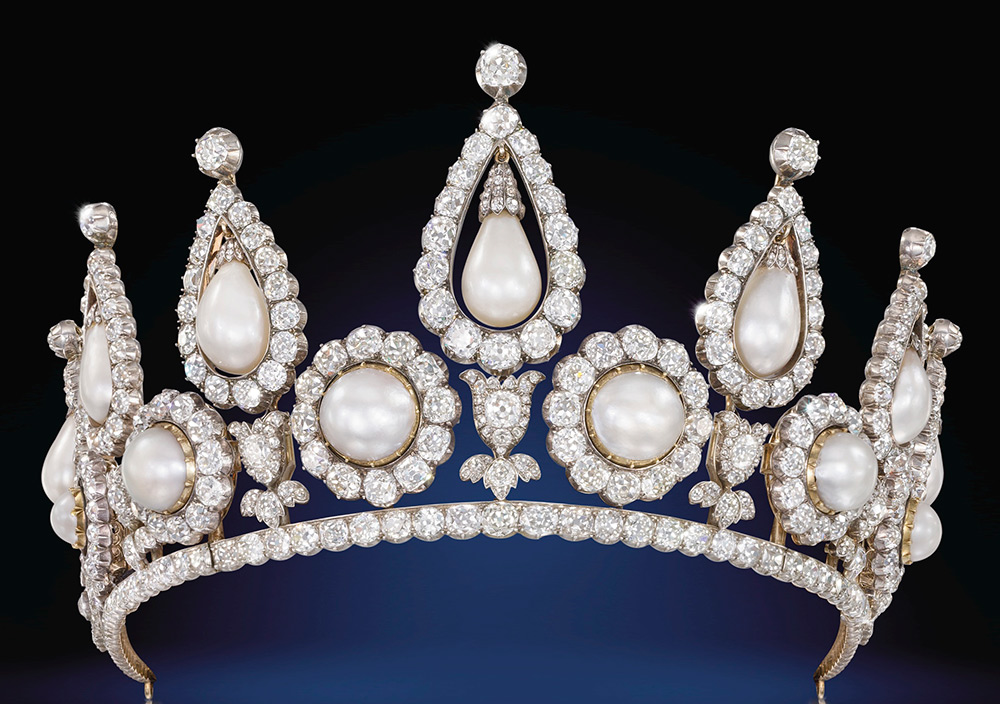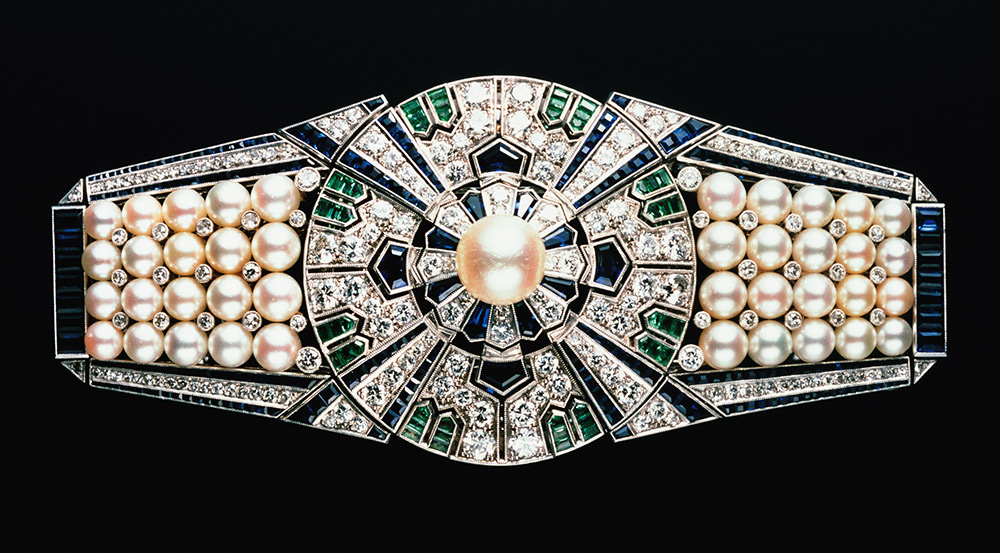This exhibit starting September 21st is truly one of a kind, exploring one of the most enchanting jewels in history: the pearl…and at the Victoria Albert museum no less.
It will begin on September 21st. The Victorian and Albert Museum, London’s premier museum of art and design, will be opening their Pearl Exhibit. The Focus: Showcasing the history and beauty of one of the world’s most beautiful and mysterious of jewels; the pearl.

Necklace with five graduated strands, Cartier, France, 1930-40, platinum, diamonds and natural Gulf pearls. Qatar Museums Authority. Photo © Sotheby’s
Pearls are one of the most enchanting jewels on earth, because they are surrounded in mystery. Created deep below the surface of the sea, in a process that is only short of magical. The rarity and difficulty of locating and obtaining pearls have made it one of the most sought after of valuable objects.

The Rosebery Pearl and Diamond Tiara, London, 1878, gold, silver, diamonds, natural bouton pearls and natural drop-shaped pearls. Qatar Museums Authority. Photo © Christie’s
Pearls often played an important role in the royal courts during the 18thand 19 centuries. And just like today, anything the royal family took a fancy to immediately became a social phenomenon.

Pearls and pearl necklaces from the Arabian Gulf
Reproduction of original photograph
The Arabian Gulf
20th century
© Hussain Alfardan Archives
As styles and status symbols have changed over the centuries, pearls have maintained its position as a symbol of beauty, elegance and mystery.
Cultured Pearls
This exhibit will also explore the beauty and mystery of the cultured pearl. As with many aspects of nature, man has attempted to replicate or in some way improve upon this lovely natural creation.
Sash clip ‘Yaguruma’ (Wheels of Arrows) and box, Mikimoto, Japan, 1937, platinum, 18 carat white gold, cultured Akoya pearls, diamonds, sapphires and emeralds. © Mikimoto Pearl Island, Japan



 The Rosebery Pearl and Diamond Tiara, London, 1878, gold, silver, diamonds, natural bouton pearls and natural drop-shaped pearls. Qatar Museums Authority. Photo © Christie’s
The Rosebery Pearl and Diamond Tiara, London, 1878, gold, silver, diamonds, natural bouton pearls and natural drop-shaped pearls. Qatar Museums Authority. Photo © Christie’s Pearls and pearl necklaces from the Arabian Gulf
Pearls and pearl necklaces from the Arabian Gulf






























